Do you have a question about the Biostar NF520-A2 - BIOS SETUP and is the answer not in the manual?
Configures basic system settings like date, time, and drive parameters.
Provides advanced configuration options for BIOS functionality and system behavior.
Allows detailed configuration of specific chipset features and performance settings.
Configures and manages onboard peripheral devices like IDE, USB, and LAN.
Configures system power saving modes and energy conservation features.
Manages Plug and Play device configurations and PCI bus resource allocation.
Monitors system hardware status, including temperatures, voltages, and fan speeds.
Adjusts CPU frequency, voltage, and memory timings for performance optimization.
Resets BIOS settings to factory defaults.
Sets a password to restrict BIOS configuration changes.
Sets a password for limited BIOS access.
Saves all configuration changes and exits setup.
Exits setup without saving any changes.
Allows updating the BIOS firmware.
Configures the system date, automatically updating the day of the week.
Sets the system's internal clock.
Configures options for the IDE Channel 0 Master device.
Configures options for the IDE Channel 0 Slave device.
Selects the type of floppy disk drive installed for Drive A.
Selects the type of floppy disk drive installed for Drive B.
Selects the default video device.
Determines POST process behavior on specific errors.
Displays detected conventional memory amount.
Displays detected extended memory amount.
Displays the total available system memory.
Enables or disables CPU internal and external cache.
Configures boot device priority and floppy drive settings.
Enables or disables boot sector virus protection.
Enables or disables an abbreviated Power On Self-Test (POST).
Sets the NumLock state upon system startup.
Selects control for Gate A20 between chipset and keyboard controller.
Enables configuration of key repeat rate and delay.
Sets password requirements for system and BIOS access.
Enables APIC device mode reporting to the operating system.
Selects Intel multiprocessor specification version.
Selects OS for systems with memory exceeding 64MB.
Enables or disables the full screen logo during system boot.
Enables or disables the small logo during system boot.
Enables or disables the system configuration and device listing screen.
Sets the HyperTransport width between K8 and Northbridge.
Enables or disables spread spectrum for PCIE and SATA.
Enables or disables HyperTransport spread spectrum function.
Enables or disables SSE/SSE2 instruction support.
Configures CPU-specific features like Virtualization and Cool'n'Quiet.
Enables caching of system BIOS ROM for performance.
Configures IDE channel settings, including RAID and PIO/UDMA modes.
Manages onboard devices like USB, HD Audio, MAC LAN, and Boot ROM.
Sets I/O addresses and interrupts for serial, parallel ports, and FDC.
Enables block transfer for IDE hard drives.
Displays the status of Advanced Configuration and Power Management.
Selects the system suspend type under ACPI operating system.
Configures power saving methods including HDD Power Down and Suspend Mode.
Determines how the monitor goes blank.
Configures hard disk drive spin-down timer for power saving.
Configures the behavior of the system power button.
Enables or disables Wake On LAN function from Soft-Off state.
Enables or disables Wake On Ring function from Soft-Off state.
Enables or disables USB resume capability from S3/S4 states.
Sets date and time for automatic system boot-up.
Enables or disables the High Precision Event Timer.
Selects the method for powering on the system.
Sets a password for keyboard-initiated system power-on.
Selects the hotkey combination for system power-on.
Determines system behavior after a power failure or interrupt.
Manages the system's ESCD for PnP resource allocation.
Selects automatic or manual assignment of IRQ and DMA.
Assigns system interrupts to PCI devices when in Manual mode.
Enables snooping on VGA palette for compatibility.
Sets the maximum payload size for PCI Transaction packets.
Sets the CPU temperature threshold for system shutdown.
Displays hardware status during the Power On Self-Test.
Selects CPU fan control mode (Smart or Always On).
Sets the CPU temperature below which the fan turns off.
Sets the CPU temperature at which the fan starts working.
Sets the CPU temperature for full fan speed operation.
Sets the PWM value for CPU fan under Smart Fan mode.
Displays status of various system voltages.
Displays the current CPU temperature.
Displays the current speed of the CPU fan.
Displays the current speed of the system fan.
Adjusts CPU Voltage Identification (VID) settings.
Sets the voltage supplied to the system memory modules.
Sets the CPU operating frequency.
Sets the frequency for the PCI Express clock.
Sets the HyperTransport speed between K8 and Northbridge.
Fine-tunes CAS Latency, tRCD, tRP, tRAS, and other timings.
Adjusts drive strength for various memory signals.
Configures on-die termination settings for DRAM signals.
Sets the number of times read/write queues can bypass.
Configures the maximum bypass count or time.
Enables or disables 32-byte granularity for memory access.
Selects manual or automatic regulation of DDR timing.
Sets the memory clock speed or limit.
Controls the Data Strobe (DQS) training process.
Enables or disables CKE base power down mode.
Configures CKE based powerdown behavior.
Enables or disables memory clock tri-stating.
Enables or disables memory hole remapping.
Enables or disables automatic optimization of bottom IO.
Configures the bottom of the IO space.
Configures basic system settings like date, time, and drive parameters.
Provides advanced configuration options for BIOS functionality and system behavior.
Allows detailed configuration of specific chipset features and performance settings.
Configures and manages onboard peripheral devices like IDE, USB, and LAN.
Configures system power saving modes and energy conservation features.
Manages Plug and Play device configurations and PCI bus resource allocation.
Monitors system hardware status, including temperatures, voltages, and fan speeds.
Adjusts CPU frequency, voltage, and memory timings for performance optimization.
Resets BIOS settings to factory defaults.
Sets a password to restrict BIOS configuration changes.
Sets a password for limited BIOS access.
Saves all configuration changes and exits setup.
Exits setup without saving any changes.
Allows updating the BIOS firmware.
Configures the system date, automatically updating the day of the week.
Sets the system's internal clock.
Configures options for the IDE Channel 0 Master device.
Configures options for the IDE Channel 0 Slave device.
Selects the type of floppy disk drive installed for Drive A.
Selects the type of floppy disk drive installed for Drive B.
Selects the default video device.
Determines POST process behavior on specific errors.
Displays detected conventional memory amount.
Displays detected extended memory amount.
Displays the total available system memory.
Enables or disables CPU internal and external cache.
Configures boot device priority and floppy drive settings.
Enables or disables boot sector virus protection.
Enables or disables an abbreviated Power On Self-Test (POST).
Sets the NumLock state upon system startup.
Selects control for Gate A20 between chipset and keyboard controller.
Enables configuration of key repeat rate and delay.
Sets password requirements for system and BIOS access.
Enables APIC device mode reporting to the operating system.
Selects Intel multiprocessor specification version.
Selects OS for systems with memory exceeding 64MB.
Enables or disables the full screen logo during system boot.
Enables or disables the small logo during system boot.
Enables or disables the system configuration and device listing screen.
Sets the HyperTransport width between K8 and Northbridge.
Enables or disables spread spectrum for PCIE and SATA.
Enables or disables HyperTransport spread spectrum function.
Enables or disables SSE/SSE2 instruction support.
Configures CPU-specific features like Virtualization and Cool'n'Quiet.
Enables caching of system BIOS ROM for performance.
Configures IDE channel settings, including RAID and PIO/UDMA modes.
Manages onboard devices like USB, HD Audio, MAC LAN, and Boot ROM.
Sets I/O addresses and interrupts for serial, parallel ports, and FDC.
Enables block transfer for IDE hard drives.
Displays the status of Advanced Configuration and Power Management.
Selects the system suspend type under ACPI operating system.
Configures power saving methods including HDD Power Down and Suspend Mode.
Determines how the monitor goes blank.
Configures hard disk drive spin-down timer for power saving.
Configures the behavior of the system power button.
Enables or disables Wake On LAN function from Soft-Off state.
Enables or disables Wake On Ring function from Soft-Off state.
Enables or disables USB resume capability from S3/S4 states.
Sets date and time for automatic system boot-up.
Enables or disables the High Precision Event Timer.
Selects the method for powering on the system.
Sets a password for keyboard-initiated system power-on.
Selects the hotkey combination for system power-on.
Determines system behavior after a power failure or interrupt.
Manages the system's ESCD for PnP resource allocation.
Selects automatic or manual assignment of IRQ and DMA.
Assigns system interrupts to PCI devices when in Manual mode.
Enables snooping on VGA palette for compatibility.
Sets the maximum payload size for PCI Transaction packets.
Sets the CPU temperature threshold for system shutdown.
Displays hardware status during the Power On Self-Test.
Selects CPU fan control mode (Smart or Always On).
Sets the CPU temperature below which the fan turns off.
Sets the CPU temperature at which the fan starts working.
Sets the CPU temperature for full fan speed operation.
Sets the PWM value for CPU fan under Smart Fan mode.
Displays status of various system voltages.
Displays the current CPU temperature.
Displays the current speed of the CPU fan.
Displays the current speed of the system fan.
Adjusts CPU Voltage Identification (VID) settings.
Sets the voltage supplied to the system memory modules.
Sets the CPU operating frequency.
Sets the frequency for the PCI Express clock.
Sets the HyperTransport speed between K8 and Northbridge.
Fine-tunes CAS Latency, tRCD, tRP, tRAS, and other timings.
Adjusts drive strength for various memory signals.
Configures on-die termination settings for DRAM signals.
Sets the number of times read/write queues can bypass.
Configures the maximum bypass count or time.
Enables or disables 32-byte granularity for memory access.
Selects manual or automatic regulation of DDR timing.
Sets the memory clock speed or limit.
Controls the Data Strobe (DQS) training process.
Enables or disables CKE base power down mode.
Configures CKE based powerdown behavior.
Enables or disables memory clock tri-stating.
Enables or disables memory hole remapping.
Enables or disables automatic optimization of bottom IO.
Configures the bottom of the IO space.
| Form Factor | ATX |
|---|---|
| Chipset | nVidia nForce 520 |
| Socket | AM2 |
| Max Memory | 8 GB |
| Audio | Realtek ALC662 6-Channel HD Audio |
| BIOS Type | AMI BIOS |
| BIOS Memory | 4 MB |
| Memory Support | DDR2 533/667/800 MHz |
| LAN | Realtek RTL8201CL 10/100 Mbps |
| Memory Slots | 4 |
| Expansion Slots | 1 x PCIe x16, 2 x PCIe x1, 3 x PCI |
| Storage Interface | 4 x SATA 3Gb/s |
| BIOS Features | ACPI, PnP, DMI |
| CPU Support | AMD Athlon 64, Athlon 64 X2, Sempron |

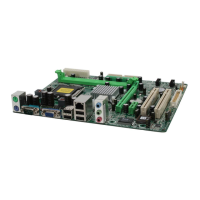
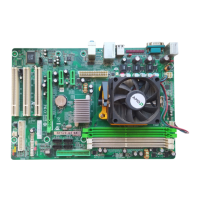
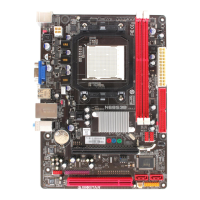
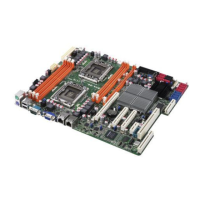

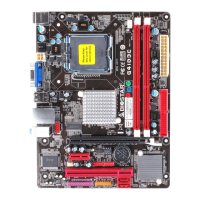
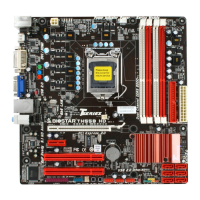

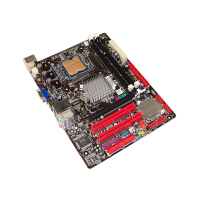
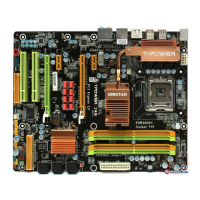
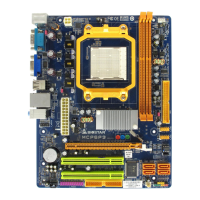
